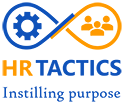Creating a positive candidate experience – The Ideal Interview

The interview is the first interactive experience that a candidate has with the company. Making an impression is as important for the company as it is for the candidate. The precedent that is set by the Job Description needs to be continued throughout the selection process, including the interview. Here are some of the key approaches I suggest and implement for my clients that have shown excellent results in hiring the best talent.
The Storytelling Element
For today’s new-age employees, the job description and remuneration are not the only things that matter. They also focus on what kind of experiences they are going to get and what role they will play by joining an organization. The types of experiences and stories shared by existing employees during the interview process can play a pivotal role in demonstrating the value the potential employer can bring to an individual’s professional and personal life. I have seen niche-skilled resources ready to change their technological profiles because they were convinced about the story that was told by the organization. This is a testament to the power of storytelling. The story needs to be consistent and depict the core values of the company. This not only comes from encouraging and preparing employees to share their experiences within the organization but actually creating an atmosphere that creates positive employee experiences.
Moving away from the Conventional
In most companies, interviews are carried out in a very traditional manner. Companies fail to create an impression on the candidates and wonder why they are unable to interest talent in joining despite reasonable pay packages for given profiles. The fact is that at any given stage, there is no effort in keeping the candidate excited throughout the interview. Candidates need to see various aspects of an organization’s culture during the selection process, be it in the form of interdepartmental interactions, information about various initiatives and activities, leadership interactions etc.
It is also important for all decision-makers to be aligned about the scope of a particular role in the organization. A lack of a unified approach can put off potential talent as they will fail to see where they fit within the organization and also sense a lack of communication within the organization. A unified approach will also enable the employer in planning the interview process more efficiently as they can clearly decide who delves into what topic during the selection process.
Soft skills are another aspect that cannot be ignored in the current workplace. Many times interviewers focus very heavily on hard skills and completely overlook soft skills like adaptability, creativity, collaboration etc. During such interviews, the organization comes across as impersonal and transactional. Needless to say, most individuals would not be able to relate to such employers and would not be attracted to the job offers.
Lastly, the candidates should be given adequate opportunity to ask questions and clear any doubts they may have about their role or the organization. The interview needs to be viewed as a dialogue rather than an examination.
Keeping in Touch
I have often seen that companies do not communicate efficiently with candidates. From planning the interview to providing feedback after the interview, keeping in touch can make all the difference between retaining a selected candidate. Prompt responses and carefully chosen words can go a long way in creating a positive impression. For example, politely thanking the candidate for their time and saying that they were not selected is much better than saying that they are “rejected”.
Before the interview, it is necessary to provide the candidate with all the required information like date, time and place of interview, any documents they are expected to carry, and any relevant information or reading material that would be of use before the interview. It would be respectful to the candidate if the time of the interview is chosen mutually rather than only at the interviewer’s convenience.
After the interview, the fact that the candidate is expecting feedback is an indicator that the interview process went well. It is the responsibility of the company to inform the candidate of a decision as soon as possible. Keeping potential resources waiting is not ideal and should be avoided. For selected candidates, further actions should be clearly communicated to speed up the onboarding process.
If the candidates are not selected, interviewers must communicate the decision professionally. It is also a good idea to inform the candidate of the reasons why they did not move further in the process and how they can improve. In some cases, I have seen companies call on candidates again after they were adequately prepared based on the feedback and secured the job.
Conclusion – Making an Impression
I strongly recommend that candidates ‘Choose their boss, and then the company’. This is to say that people make the first impression and then the company. It is vital to prepare interviewers in creating a memorable experience for the candidate to attract the best talent. The interview process is a reflection of what the candidates can expect from an employer.
